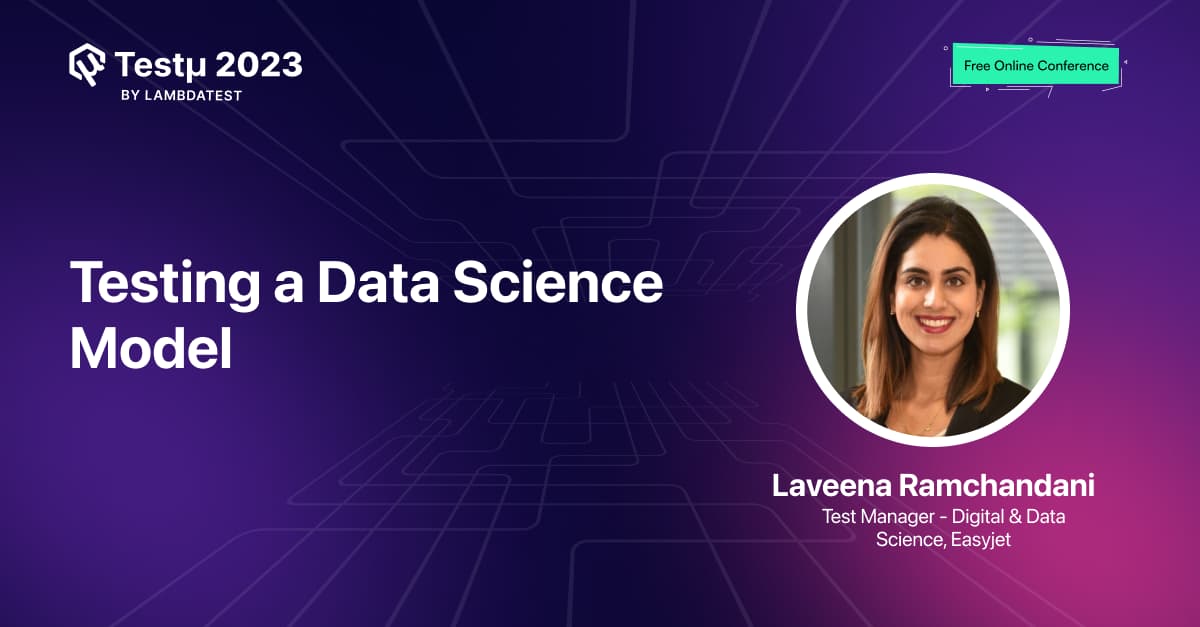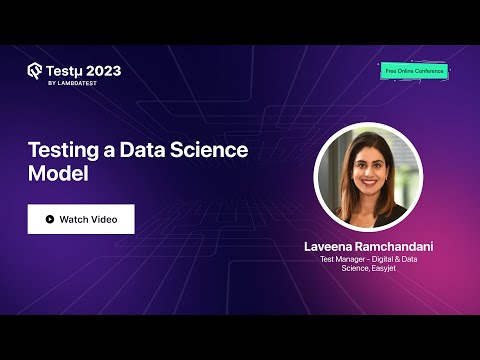Do you know how data plays a vital role in models?
How to train a data science model keeping different personas in mind? 
Switch to this engaging session to delve deeper into the basics of data science and how to test a data science model.
Still not registered? Hurry up and grab your free tickets: Register Now!
If you have already registered and up for the session, feel free to post your questions in the thread below
Here are some of the questions and their answers picked during the session.
How can we manage analyzing a large volume of data efficiently, especially in a fast-paced environment?
Laveena: In a fast-paced setting, quickly assess data by sampling examples from each file to create a golden set. For extensive datasets, collaborate with a data engineer embedded in the team to analyze and understand the data. Sharing assumptions or ambiguities with the data engineer helps address complexities effectively.
How about dealing with massive volumes of data for testing?
Laveena: When faced with substantial datasets, consider working alongside a data engineer. Collaborate to select crucial test scenarios, edge cases, and bug scenarios to create an internal test dataset mirroring client data. This eliminates the need for large client data volumes while covering essential testing scenarios.
What are the objectives and expected outcomes of introducing a new feature, particularly involving a data science model?
Laveena: Before testing, align on the new feature’s nature – whether a new algorithm or an enhancement. Anticipate how this change influences model behavior and results. Use the “Three Amigos” session to address uncertainties and collaboratively create a preliminary test plan. This ensures clear communication among developers, business analysts, and testers.
Let’s look at some of the unanswered questions:
How we can use AI tools for testing data science models?
What is the scope for test automation of data science model?
What are some common pitfalls to look out for while setting up data pipelines for the model?
When you talk about data science models, are you looking at machine leaning models such as regression models like linear regression, classification models like decision tree, random forests, clustering models such as K means etc. How to test these?
What processes and strategies do you recommend for capturing accurate output results while ensuring customer benefit?
How can we have data validated, if model is generating huge data?
Any examples of data science model for mobile apps?
What is the custom made model?
How is AI related to Data Science?
What did you suggest for us to learn for a manual test engineer looking forward to start automation?
Hi there,
If you couldn’t catch the session live, don’t worry! You can watch the recording here:
Additionally, we’ve got you covered with a detailed session blog:
Hello,
Laveena’s session prefers to retain the point made on AI. AI tools have the capability to support the testing of data science models by automating tasks like data validation, feature engineering, and model evaluation. These tools are adept at recognizing data anomalies, promoting model fairness and robustness, and optimizing the testing pipeline to boost the reliability and precision of models.
Hope this information was useful. 
Hey, LambdaTest
As I attended this session, I want to keep my point here. The potential for test automation of data science models is substantial. Automation offers the advantages of ongoing model validation, minimizing human errors, and accelerating testing across diverse datasets and scenarios. These benefits not only improve model reliability but also facilitate efficient deployment and real-world monitoring.
Hey LambdaTest,
The basic setting up data pipelines for models, there are some common pitfalls that you need to take care of those are :
-
Data Quality: Incomplete or inaccurate data can lead to unreliable models, so ensure data is clean and accurate.
-
Overfitting: Be cautious of models that learn noise in data; validate unseen data to prevent overfitting.
-
Data Leakage: Keep future or unintended information from training data to avoid unrealistic model performance.
-
Bias and Fairness: Models can inherit biases; and check and mitigate for fairness.
-
Feature Engineering: Carefully select and engineer features for optimal model performance.
-
Scalability: Ensure pipelines handle growing data volumes efficiently.
-
Model Drift: Monitor and retrain models as data distributions change over time.
-
Version Control: Maintain data and model versioning to track changes and reproduce results.
-
Documentation: Document data sources, preprocessing, and model configurations for clarity.
-
Security: Protect sensitive data used in pipelines to ensure privacy.
Hope this resolves your query happy to help 
Hello, LambdaTest.
When discussing data science models, we typically refer to a broad range of machine learning models, including regression models (like linear regression), classification models (such as decision trees and random forests), clustering models (like K-means), and many others.
Testing these models typically involves the following steps:
-
Get Data Ready: Ensure your data is clean and split into training and testing parts.
-
Teach the Model: Train your model using the training data.
-
Check How Good it is: Test the model with the testing data to see how well it predicts.
-
Double-check: Use techniques like cross-validation to make sure it’s reliable.
-
Tweak the Model: Adjust the model’s settings to make it work better if needed.
-
Fix Imbalances: If the data is uneven, balance it out so the model isn’t biased.
-
Know What Matters: Determine which factors the model cares about the most.
-
Be Fair: Ensure the model doesn’t treat different groups unfairly.
-
Understand Predictions: Explain why the model makes certain predictions (if needed).
-
Test in Real Life: If you use the model in the real world, test it there too.
-
Keep an Eye: Watch how the model does over time and update it when needed.
Hope this information is useful 
Hey LambdaTest,
I’m pleased to step in on behalf of the speaker. It’s important to highlight that the accuracy of output results and the resulting customer benefit hinge on establishing robust quality assurance processes. These processes play an important role in meticulously validating output accuracy.
Furthermore, maintaining an ongoing feedback loop with both customers and stakeholders is paramount. This collaborative approach allows for the fine-tuning of output to align seamlessly with their ever-evolving needs, ensuring that it not only provides meaningful benefits but also endures over time.
Best Regards 
![]()

